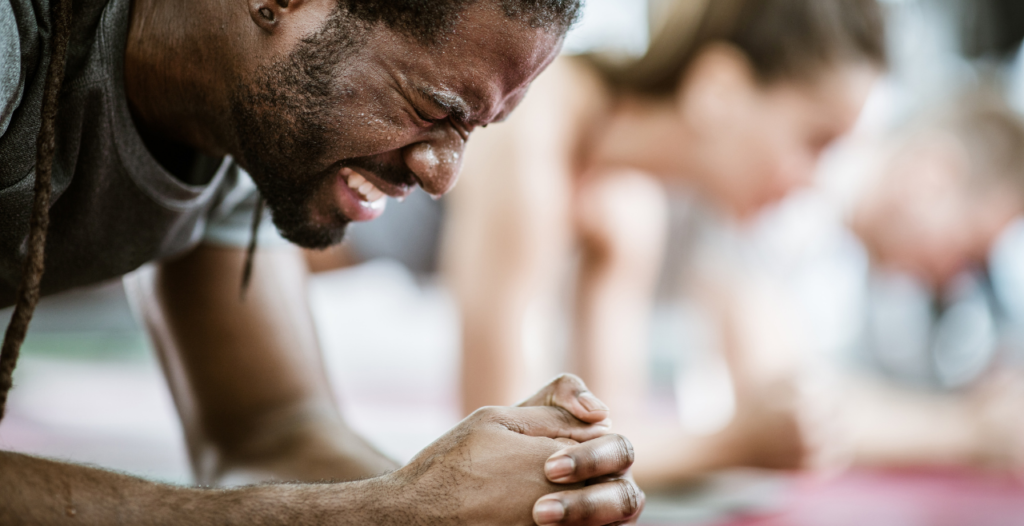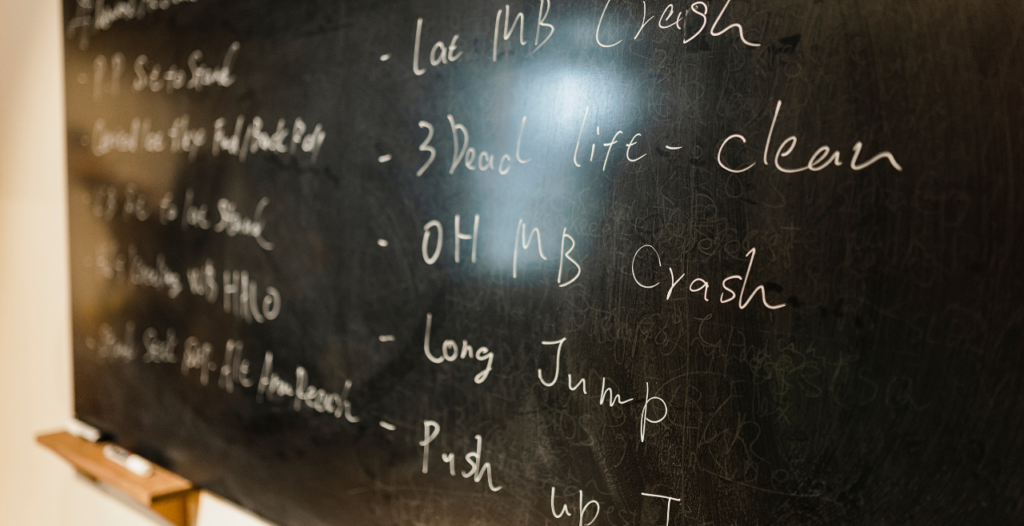Strange looking parachute prop aside, I promise the basics are much simpler to start with…
Finding "resistance"
Have you ever looked at a fit person and wondered why is the world so unfair, that they are blessed with such a good body – but not me!? Envy aside, sometimes we feel an aspiration to look like them – for the guys, those ripped six pack abs, and as for the ladies, a Victoria Secret model’s body in their prime years. Setting these high achievement goals can be one of the underlying motivations to lose weight and keep fit. It certainly is for me when I first started my fat loss journey well aside from the obvious health benefits!
Previously, I’ve talked at length behind why we become fat and how we can better manage it through our diet. However, to get the dream body you’ve been aiming for, you’ll need to incorporate some form of physical activity into your daily routine. Note that walking hours on end or running a marathon everyday won’t necessarily get you the results you’re looking for. What you want to be doing is to build up good muscle tone in order to essentially “sculpt” your body to what you want it to look like.
What I’m talking about is undergoing resistance training!
So what is resistance training? Well, it simply means training – but with the use of resistance of course! Ok, thanks Captain Obvious, but what exactly constitutes as “resistance” and where can we find this resistance?
In layman’s terms, think of it as subjecting your targeted muscles to perform a push or pull against an opposing force. For example, lifting a box or carrying grocery bags can be considered as resistance training – here you are going against gravity. When you row a boat, you’re pushing against the weight of water being displaced. Even the simplest form of exercise like push ups is also a type of resistance training (see if you can identify the force you’re opposing).
A common misconception is that hitting the gym is necessary to perform resistance training. While it has its bonuses, you absolutely can start off equipment-free just as I did. I’ll be listing down some simple beginner exercises for you to follow in the last parts of this article. But for now, I’ll first have to convince you on the health reasons as to why we voluntarily strain ourselves.
Looking past the burn

What everyone who’s gone through resistance training will tell you is how painful first time experiences are. Don’t feel horrible as this is a pretty normal reaction to a body that’s never been subjected to resistance. Imagine the burn of carrying 8 grocery bags from the cashier to your car in 1 go – now imagine needing to do that for a few times today and then adding on 2 more bags for tomorrow’s session 😣.
I can say I derive no pleasure from my first session either. However, the long term health benefits greatly outweighs any demotivating factor that I was going through at the time.
1. Daily errands will be a breeze
Look up farmer’s carry and you can see where it gets its name from. It’s essentially a resistance training exercise where you lug around heavy weights similar to how you would carry your grocery bags. By training with heavier loads (at least heavier than your groceries), you’ll be able to train your muscles in well… carrying heavy things!
I personally am a fan and frequent this exercise as it helps me do household chores and haul heavy buckets of water without being too out of breath at the end.
2. It improves muscle to fat ratio
This means having more muscle bulk than fats in your body. However we don’t want to just look skinny – but being flabby and weak. The key here is maintaining a caloric deficit (read more in my previous article here), that is building your muscles while burning away your fats. Training your muscles will reduce the likelihood of muscle breakdown for energy which results in a cachexic-looking physique.
3. It prevents or helps to manage chronic conditions
I would say this is among the more important factor to consider, more so than developing good physical looks. We should definitely value the health and longevity benefits that resistance training can bring such as controlling metabolic diseases like obesity and diabetes by regulating insulin production.
Apart from what’s listed there’s simply numerous more other perks in starting with resistance training or incorporating it into your training regime if you’ve started working out already.
With all said and done, I know what you’re thinking. But Peeennnggg, you’ve sold me on this so now how should I start?
Disclaimer: Hold on my beloved readers! As we’re now approaching my recommendation section for basic ways in starting off with resistance training, you would first want to be sure that you are reasonably fit, healthy and cleared by a medical professional to start an exercise program. Not everyone can start off at the same pace so be sure to know yours first 😀.
Specially curated for you!

So the current recommendation by the American College of Sports Medicine (ACSM) is to have 2 full body resistance training in a week, so that’s what we’ll be following to start with – having them on Mondays and Thursdays would be great as it gives adequate rest days in between. Then once you’ve become more comfortable you can slowly increase the number of days at your own pace. ideally we want to have have resistance training every other day, but if life happens, then it’s fine too. The most important thing to take to heart is that you’re trying – taking your baby steps towards a better, healthier you!
The warm-up
The purpose of the warm-up is to get your body ready for exercise. Similar to warming your car before a drive, your body performs best once it is all warmed up! Light, aerobic activities that gets you nice and warm are what you should go for. Anything from rope skipping to light 5-10min jog works wondrously.
The workout
We will be training using mainly compound movements. These are basically movements that require multiple muscles to perform one action. It’s good to do exercises which incorporate multiple groups of muscles because it’s the most time efficient way of training and our body tends to like to use multiple muscle groups in our day-to-day tasks anyways. It is also a more balanced workout and avoids neglecting some muscle groups. Essentially, we are trying to avoid a “skip leg day” body 😅.
Menu 1 (Monday regime)
Horizontal push – perform push ups for 10 repetitions (reps), to be done twice or thrice (aka 2 or 3 sets). Instructional video credit to Calisthenicmovement
Horizontal pull – perform bar or table inverted row for 2 to 3 sets of 10 reps. Instructional video credit to BarBend
Squat – perform the air squat for 2 to 3 sets of 10 reps. Instructional video credit to ScottHermanFitness
Abs – 30-60 seconds of normal plank for 3 sets. Instructional video credit to FitnessFAQs
Menu 2 (Thursday regime)
Vertical push – perform dumbbell (or 1.5L water bottle) overhead press for 2 to 3 sets of 12 reps. Instructional video credit to Barbell Brigade
Hinge – perform the glute bridge for 2 to 3 sets of 10 reps. Instructional video credit to ScottHermanFitness
Lunge – perform the bodyweight lunge for 2 to 3 sets, 10 steps on each leg. Instructional video credit goes to ScottHermanFitness
Side plank – 30-60 seconds of side plank for 3 sets. Instructional video credit to Jessica Manning
Wow, that’s a lot of things to take in for this article so I’ll just leave it at that for now! The above menus are just sample introductory programmes that I’ve put together specially for you to start resistance training. As always, be sure that you are medically fit to start any exercising programme, and I wish you all the best on your fat loss journey!

